-
Car Reviews
- All reviews
- Midsize SUVs
- Small cars
- Utes
- Small SUVs
- Large SUVs
- Large cars
- Sports SUVs
- Sports cars
- Vans
Latest reviews
- Car News
-
Car Comparisons
Latest comparisons
- Chasing Deals
In an attempt to offers buyers more choice, Mazda has introduced a fourth CX-60 powertrain – a 2.5-litre four-cylinder with rear-wheel drive, saving $6000
Just over three years after the ‘premium’ CX-60 arrived in Mazda’s Australian showrooms, followed by two rounds of suspension revisions – the most recent being a comprehensive retune in April 2025 – a new four-cylinder base engine has debuted in the CX-60, taking its powertrain choices to four.
It’s a familiar engine – the 2.5-litre ‘SkyActiv-G’ naturally aspirated four-cylinder that debuted in the third-generation Mazda 6 in late-2012 and original CX-5 in 2013, which has since powered over 400,000 Mazda vehicles in Australia. It produces 138kW and 250Nm.
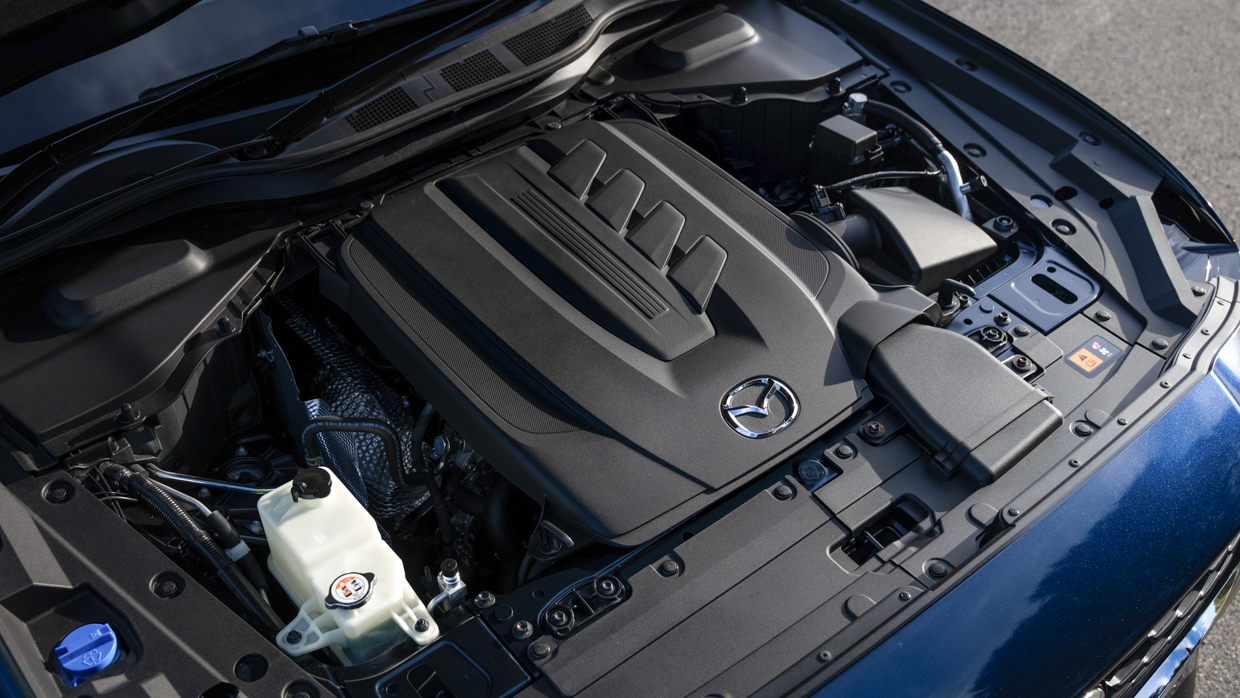
But this is the first time it’s been turned north-south in a longitudinal configuration, exclusively driving the rear wheels in this ‘affordable’ new entry-level CX-60.
For a blanket $6000 saving over the turbo-petrol G40e six-cylinder CX-60 variants, the new G25 four-cylinder is offered in three identical trim levels to the sixes – Pure ($44,240), Evolve ($49,240) and Touring ($52,240), with a $47,990 drive-away offer on the G25 Pure.
Given the CX-60’s ‘premium medium’ launch positioning, as well as the existence of Mazda’s big-selling CX-5 medium SUV ($36,740 to $55,650) – which will be replaced by an all-new model in the second half of 2026 – you might be questioning why Mazda Australia felt the need to introduce a four-cylinder CX-60.
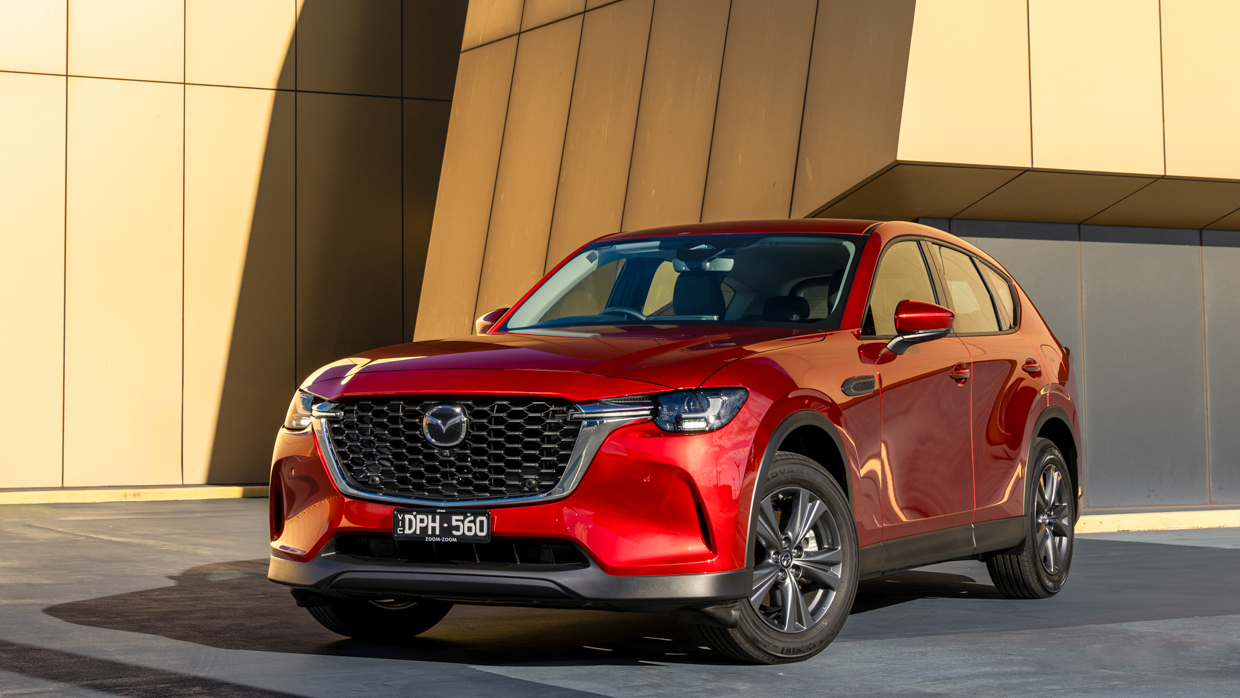
The answer is greater choice. Spec for spec, the CX-60 G25 Touring (the ideal trim grade, though more of that shortly) is $9640 more expensive than the CX-5 G25 Touring, for which you get a slightly larger, much newer design with a classier interior, rear-wheel drive (instead of front-drive) and an eight-speed automatic transmission (instead of a six-speed).
Mazda expects the four-cylinder version to account for 34 percent of total CX-60 sales going forward (currently around 5500 units annually), with the most popular trim level being the GT (making up 31 percent, though only available in six-cylinder versions and the plug-in hybrid), followed by the new base Pure grade (22 percent).
As for which is the best variant to buy, the Touring makes the most sense with its perforated leather trim and heated electric front seats, plus wireless phone charging, power tailgate, front cross-traffic alert, 360-degree camera and 12.3-inch TFT driver’s display it inherits from the cheaper Evolve.
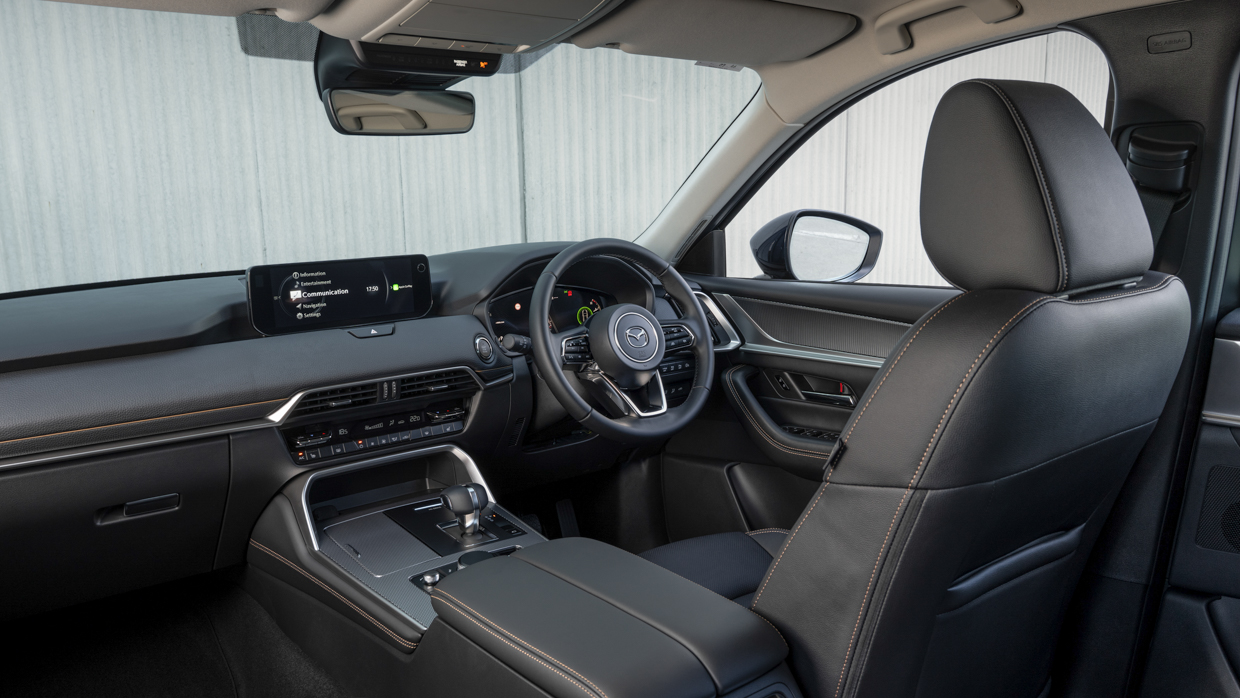
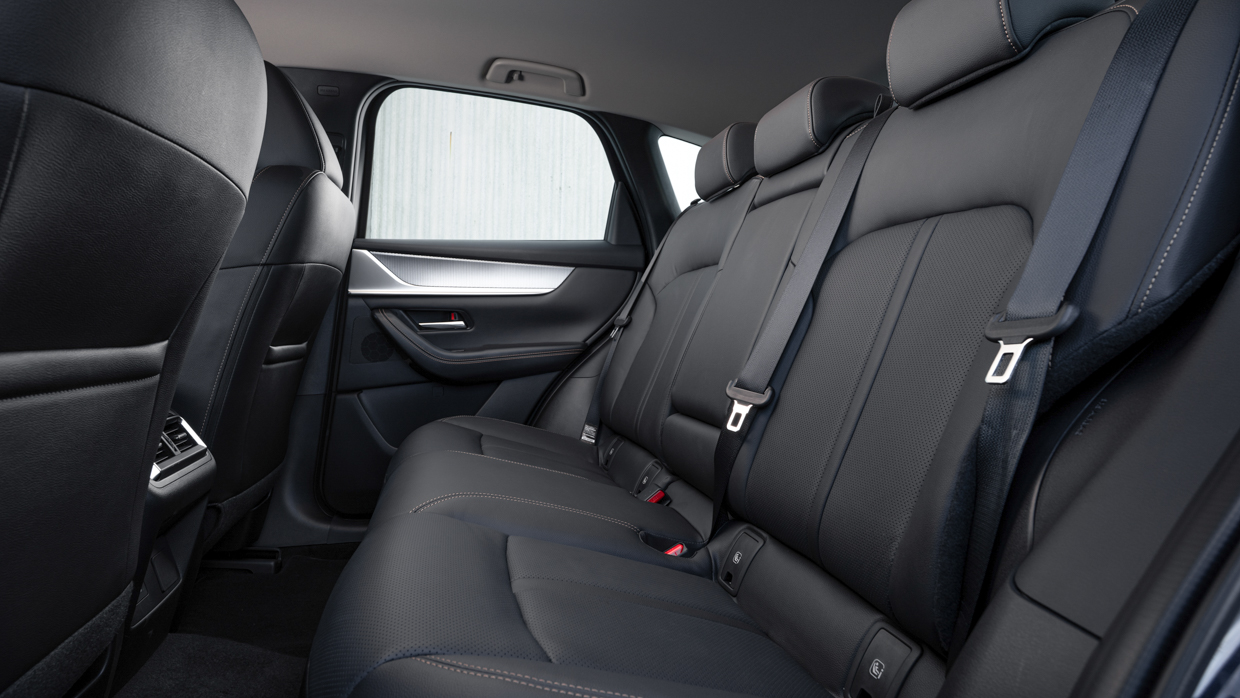
Unfortunately, the Evolve features sticky vinyl ‘Maztex’ upholstery while the entry-level Pure (which gets pleasant all-cloth upholstery) replaces the dashboard’s soft-touch finishes and the door’s stitched-upholstery wrapping with rock-hard plastic – meaning an Evolve with the Pure’s seat upholstery would be far more preferable…but not possible.
As for the topic at hand, what about the CX-60’s new four-cylinder powertrain? Does it suit the CX-60 as a starter engine or is it a false economy, so to speak?
Firstly, it saves $6000, so if you’re a retiree who can make that amount go a long way and prefer the CX-60’s size over a CX-5, then there’s logic to this new base version. It’s also rear-wheel drive, so it may make further sense if you don’t need an AWD vehicle.
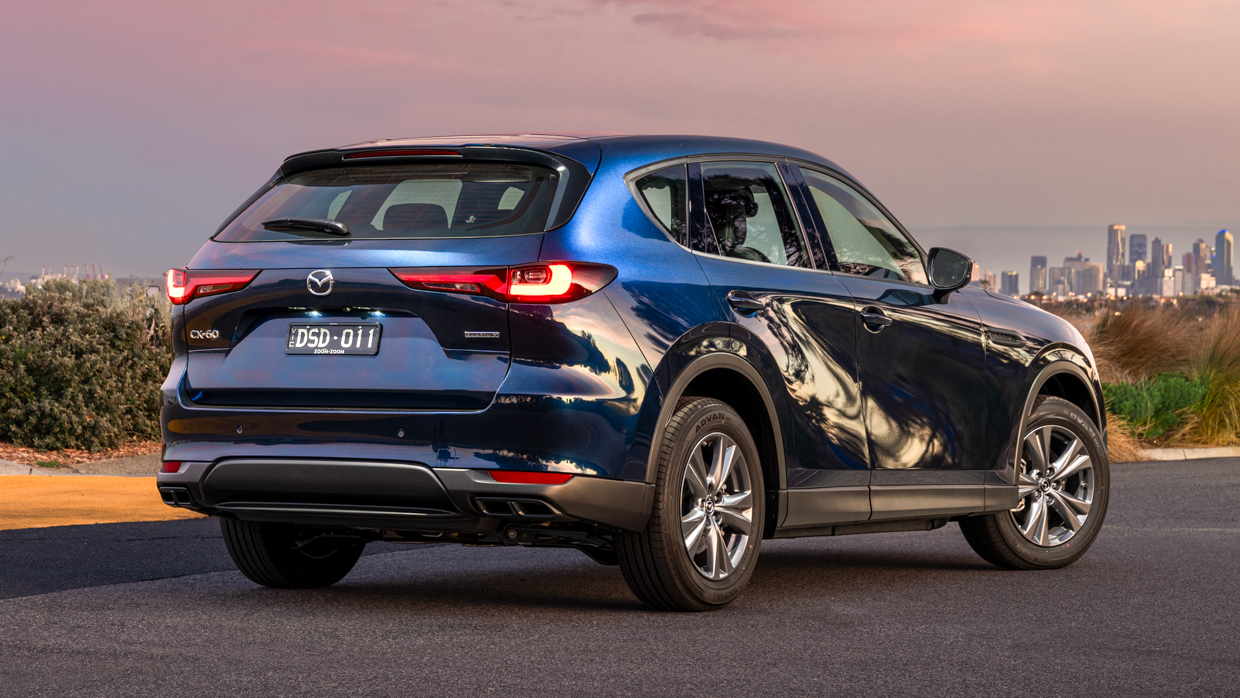
But there is no fuel economy gain in choosing the four-pot CX-60 G25. Its official combined fuel consumption of 7.5L/100km is slightly thirstier than the six-cylinder turbo-petrol G40e (at 7.4L/100km, with both tuned for 91-octane regular unleaded).
And while the four-cylinder CX-60 weighs around 150kg less than the six-cylinder AWD, it forgoes a massive 71kW of power and 200Nm of torque in its cost-saving quest for a sharp entry price.
That level of output reduction has a sizeable impact on the CX-60’s performance and driveability. The power-to-weight ratio of a base four-cylinder CX-60 Pure is just under 75kW/tonne whereas its six-cylinder equivalent is 104kW/tonne (and a front-drive CX-5 Touring is 87kW/tonne) – making the six-pack version 39 percent better off on paper.
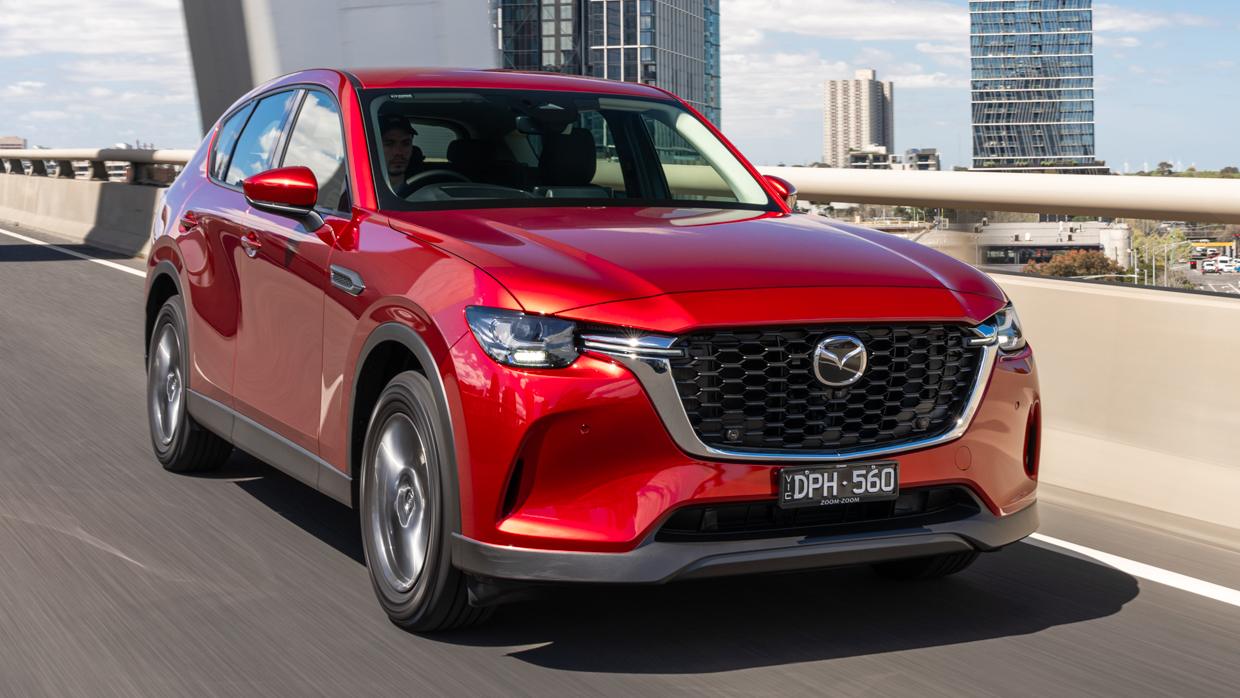
On the road the difference feels similarly dramatic, though the eight-speed auto four-cylinder is smooth and unobtrusive in modest day-to-day running. Make minimal demands and it achieves all anyone could ever expect. But when challenged, it lacks the torquey, wafty effortless of the turbo-six and is let down by its calibration.
Driven in Normal mode (the default at every restart), the four-pot CX-60 is tuned purely for economy – meaning a dogged reluctance to downshift on hills, to the detriment of maintaining speed. And once the 2.5L SUV has lost so much pace that it’s forced to shift down, it needs to mine its ratio set to regain momentum – surely at the expense of real-world fuel efficiency.
Flick the ‘MI-Drive’ toggle to Sport mode and things are dramatically improved. Throttle response is much keener, gear selection is far more immediate and the four-pot CX-60 finally feels like it deploys everything it has available…but few, if any, four-pot CX-60 buyers are going to do that.
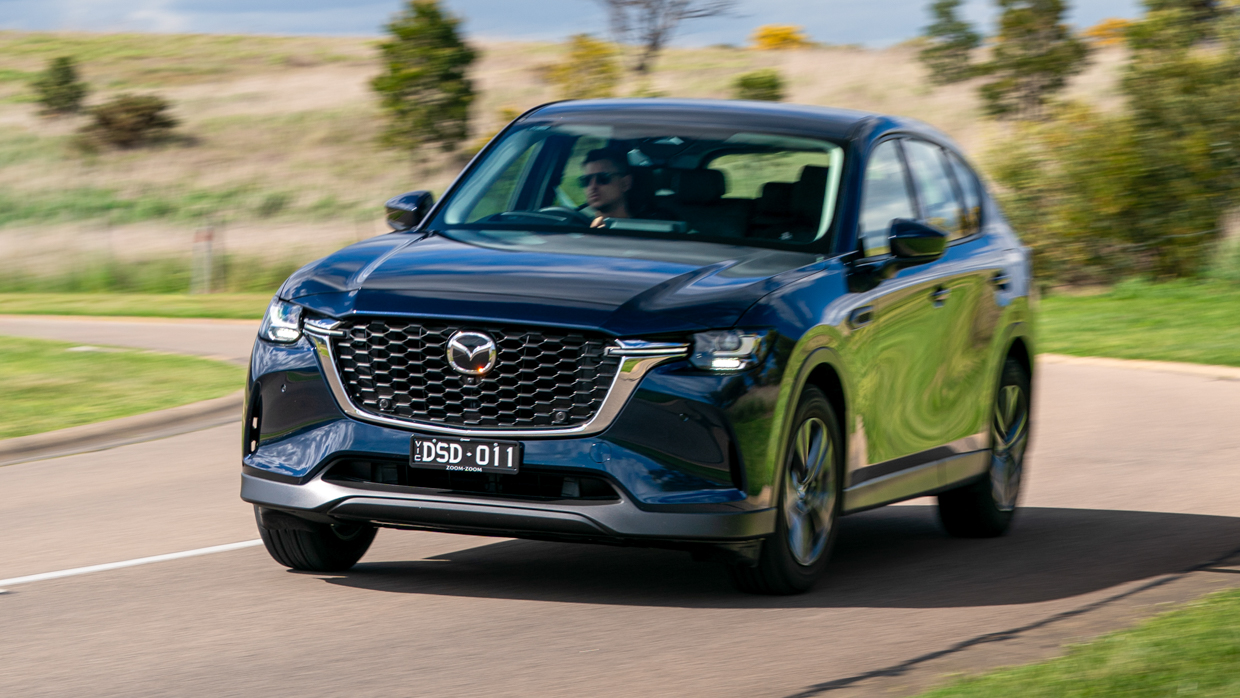
And even then, with your right foot mashed, you’re looking at 0-100km/h times of 10 to 11 seconds here, not the high-sixes of the turbo six.
The four-cylinder doesn’t sound particularly inspiring when being driven hard either – its rather hollow induction note ceding aural pleasure to the lusty, thrusty boosted six. And it doesn’t blend as well with the CX-60’s extensively retuned chassis – not compared to the firm but focused flavour of the updated six-pack.
Mazda has revised the spring and damper rates to enhance ride comfort and roadholding, while also lowering the mounting point of the front knuckles to “enhance understeer control” and removing the rear anti-roll bar in order to reduce oversteer.
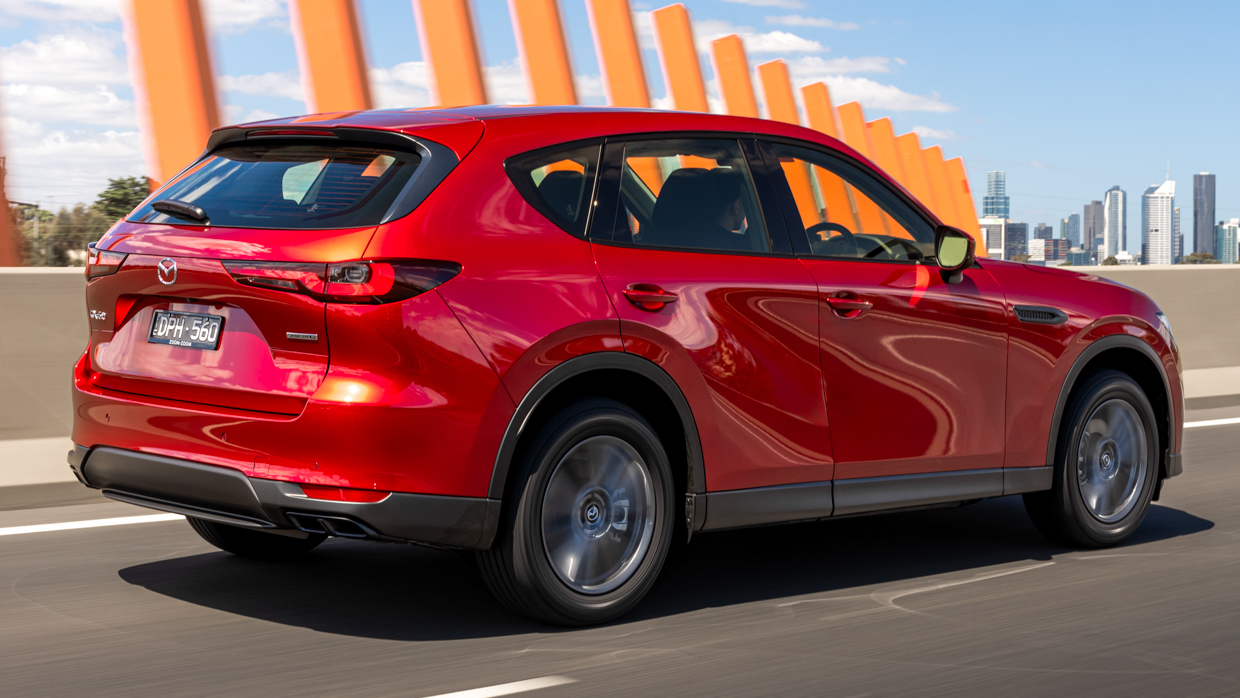
There’s also shorter rear bump stops for greater suspension travel, different rear axle bushes to enhance control, revised stability-control software, less steering vibration and improved steering feel. Yet somehow the four-cylinder’s firmness doesn’t feel as finessed or as high-quality in its behaviour as the six-cylinder’s suspension.
Ultimately, it’s too firm for an SUV with such limited performance ambitions, and the same goes for the steering tune, which is quite heavy compared to most power-steering systems and, when combined with a busy 3.3 turns lock-to-lock, makes 90-degree urban turns at 40-60km/h speeds more of a chore than it should be in a car most likely to be bought by retirees.
That’s the demographic that best suits the CX-60 four-cylinder – older people not in a hurry, who won’t miss the six-cylinder’s grunt, but will undoubtedly appreciate the $6000 saving, as well as the CX-60’s pleasing seat comfort, easy control layout, impressive build quality and tangible standard equipment at Touring level.
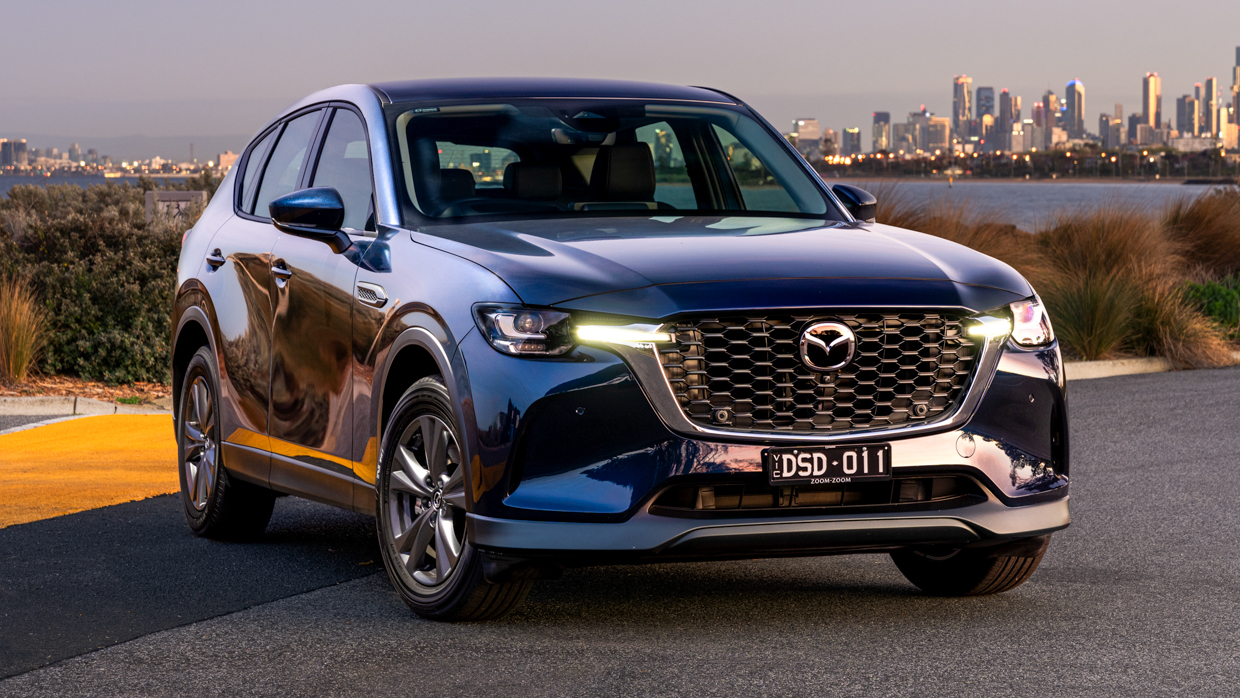
But in our opinion, the turbo-petrol six-cylinder is worth every extra cent. It’s more refined, far more effortless to drive and much easier to spend time in, yet rides with greater finesse and offers the roadholding advantages of AWD – all without any detriment to its fuel consumption.
If you want a four-cylinder Mazda SUV, we’d suggest investigating the current 2.5-litre CX-5 (turbo or non-turbo) as it approaches its run-out phase, or the next-generation CX-5 when it arrives in the second half of 2026.
Key specs (as tested)
About Chasing cars
Chasing Cars reviews are 100% independent.
Because we are powered by Budget Direct Insurance, we don’t receive advertising or sales revenue from car manufacturers.
We’re truly independent – giving you Australia’s best car reviews.
The estimate provided does not take into account your personal circumstances but is intended to give a general indication of the cost of insurance, in order to obtain a complete quote, please visit www.budgetdirect.com.au. Estimate includes 15%^ online discount.
^Conditions Apply
Budget Direct Insurance arranged by Auto & General Services Pty Ltd ACN 003 617 909(AGS) AFSL 241 411, for and on behalf of the insurer, Auto & General Insurance Company Limited(ABN 42 111 586 353, AFSL 285 571).Because we don’t know your financial needs, we can’t advise you if this insurance will suit you. You should consider your needs and the Product Disclosure Statement before making a decision to buy insurance. Terms and conditions apply.
Indicative quote based on assumptions including postcode , 40 year old male with no offences, licence suspensions or claims in the last 5 years, a NCD Rating 1 and no younger drivers listed. White car, driven up to 10,000kms a year, unfinanced, with no modifications, factory options and/or non-standard accessories, private use only and garaged at night.
^Online Discounts Terms & Conditions
1. Discounts apply to the premium paid for a new Budget Direct Gold Comprehensive Car Insurance, Third Party Property Only or Third Party Property, Fire & Theft Insurance policy initiated online on or after 29 March 2017. Discounts do not apply to optional Roadside Assistance.
2. Discounts do not apply to any renewal offer of insurance.
3. Discounts only apply to the insurance portion of the premium. Discounts are applied before government charges, taxes, levies and fees, including instalment processing fees (as applicable). The full extent of discounts may therefore be impacted.
4. We reserve the right to change the offer without notice.